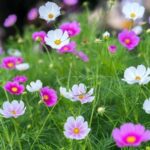Are you looking for gardening room ideas to create a beautiful and functional space in your home? Whether you have a spacious outdoor area or a small balcony, a gardening room can be a great addition to your living space.
In this article, we will explore the concept of a gardening room and its benefits, as well as provide tips and inspiration for designing and organizing your own indoor garden. Whether you’re an experienced gardener or just starting out, this guide will help you create the perfect gardening room to suit your needs.
Creating a dedicated gardening room in your home can provide numerous benefits, including the opportunity to grow plants year-round, regardless of the weather outside. It also allows you to extend your growing season and experiment with different types of plants that may not thrive in your outdoor garden.
With the right design and organization, a gardening room can also serve as a relaxing and therapeutic space where you can unwind and connect with nature. Additionally, it can act as a stylish and visually pleasing addition to your home decor.
In the following sections, we will cover everything from choosing the perfect space for your gardening room to selecting essential tools and supplies, as well as providing creative design inspiration for both small and large spaces. We will also discuss maintenance and care tips, DIY projects, greenery selection, organization solutions, and personalization ideas.
So whether you have an entire empty room to spare or just a small corner of your apartment, there are plenty of possibilities for creating a beautiful indoor garden space that suits your lifestyle.
Choosing the Perfect Space
When it comes to creating a gardening room, one of the most important aspects to consider is selecting the perfect space for your indoor garden. The location you choose will have a significant impact on the success of your gardening endeavors, so it’s essential to make a well-informed decision. Here are some tips for choosing the ideal location for your gardening room.
Consider Natural Light and Temperature
One of the key factors to keep in mind when selecting a space for your gardening room is natural light. Most plants require ample sunlight to thrive, so look for a room that receives plenty of natural light throughout the day. Consider south-facing rooms as they tend to get the most sunlight. Additionally, pay attention to temperature fluctuations in the space, as certain plants may have specific temperature requirements.
Evaluate Space and Accessibility
Another important consideration is the amount of space available and how accessible it is. Choose a room that will provide enough space for your gardening activities without feeling cramped. Additionally, ensure that the chosen space is easily accessible for regular maintenance and tending to your plants.
Assess Ventilation and Water Source
Good air circulation is vital for indoor plants, so it’s essential to assess the ventilation in the potential gardening room. Look for a space with windows that can be opened to allow fresh air in. Furthermore, consider proximity to a water source, as this will make watering your plants more convenient and efficient.
By taking these factors into account when choosing the perfect space for your gardening room, you can create an environment that will support healthy plant growth and provide an enjoyable indoor gardening experience. Keeping these tips in mind will help you select a location that meets the needs of both you and your plants while also enhancing the overall aesthetic appeal of your home’s interior design.
Design Inspiration
Designing a gardening room can be an exciting project, regardless of the size of the space you have available. Whether you have a small corner in your apartment or a dedicated room in your home, there are countless creative and functional gardening room ideas to transform your space into a green oasis.
Vertical Gardening
One of the most effective ways to maximize space in a small gardening room is through vertical gardening. You can utilize wall-mounted shelves, hanging planters, or even a living wall system to grow herbs, flowers, or small vegetables. Vertical gardening not only saves space but also adds visual interest to your gardening room.
Multipurpose Furniture
For those with limited space, consider incorporating multipurpose furniture into your gardening room design. Look for storage benches, foldable tables, or stackable containers that can serve dual functions – providing storage for gardening tools and supplies while also offering a work surface for planting and potting.
Natural Light Optimization
Regardless of the size of your gardening room, access to natural light is crucial for the health of your plants. In small spaces, strategically placing mirrors can help reflect natural light and make the space feel brighter and more spacious. For larger spaces, consider installing skylights or large windows to flood the room with sunlight.
By implementing these creative and functional ideas into your gardening room design, you can create a space that not only meets your practical needs but also reflects your personal style and love for plants. Whether you have a small or large space to work with, there are endless possibilities for creating an inspiring and inviting indoor garden retreat.
Essential Tools and Supplies
When creating a gardening room, having the right tools and supplies is essential for a well-equipped space. Whether you have a small corner dedicated to gardening or an entire room, having the necessary items can make all the difference in your gardening experience. Here are some must-have items to consider for your gardening room:
- Workbench or table: A sturdy work surface is crucial for potting plants, starting seeds, and general gardening tasks.
- Tool storage: Keep your hand trowels, pruners, gloves, and other small tools organized and easily accessible with a wall-mounted pegboard or a tool caddy.
- Watering can or hose: Depending on the size of your indoor garden, choose a watering vessel that suits your needs. For smaller spaces, a watering can may suffice, while larger areas may require a hose attachment for easy watering.
In addition to these basic items, don’t overlook the importance of proper lighting for your gardening room. Consider including grow lights to supplement natural light and ensure that your plants receive adequate illumination for healthy growth.
Bonus Tip
Don’t forget about ventilation. Even indoor plants benefit from good air circulation. Consider adding a small fan to keep the air moving in your gardening room.
Lastly, consider investing in high-quality soil and fertilizers tailored to the specific needs of your indoor plants. Proper soil composition and nutrients are essential for maintaining a thriving indoor garden.
With these essential tools and supplies in place, you’ll be well on your way to creating a functional and productive gardening room that meets all of your planting needs.
DIY Projects
When creating a gardening room, it’s essential to consider practical and budget-friendly DIY projects to enhance the functionality and aesthetic of the space. Whether you have a small or large gardening room, there are countless DIY projects that can be customized to fit your specific needs and preferences.
One popular DIY project for a gardening room is building custom shelving units or plant stands. This allows for efficient use of vertical space, creating more room for plants and gardening supplies while adding a decorative element to the room. Using repurposed materials such as wooden crates, pallets, or even old ladders can add a unique touch to the space.
Another budget-friendly DIY project is creating a potting bench or workstation. This provides a dedicated area for repotting plants, storing pots and tools, and organizing gardening essentials. Building a potting bench can be as simple as using an old table or workbench and adding hooks, shelves, and storage bins for added functionality.
For those with limited space, vertical gardens are an excellent DIY project to maximize growing space. Using hanging planters, wall-mounted shelves, or even a pegboard system can create a stunning display of greenery while keeping plants off the ground. Vertical gardens also provide easy access to plants without taking up valuable floor space.
By incorporating these DIY projects into your gardening room design, you can create a personalized and functional space that reflects your love for indoor gardening while staying within your budget. Whether you’re a seasoned gardener or just starting out with indoor plants, these projects offer endless possibilities for transforming your gardening room into an oasis of greenery and creativity.
Greenery Selection
When it comes to creating a gardening room, selecting the right plants is essential for creating a thriving indoor garden. Whether you have a small or large gardening room, there are plenty of plant options to suit your space and care requirements. Some of the best plants for indoor gardening include herbs like basil, parsley, and mint, which not only add greenery to your space but also provide fresh ingredients for cooking.
Another popular choice for indoor gardening is succulents, known for their low maintenance and ability to thrive in dry conditions. These can add a touch of green to any space without requiring too much attention. For those with larger gardening rooms or more experience with indoor gardening, consider adding small fruit-bearing plants such as tomatoes or strawberries. This can allow you to enjoy the fruits of your labor even in a limited indoor space.
Caring for indoor plants requires attention to light, water, and temperature. Ensure that your chosen plants receive adequate sunlight based on their specific needs and be mindful of overwatering. It’s also important to monitor the temperature and humidity levels in your gardening room to create an optimal environment for plant growth.
| Plant Type | Care Tips |
|---|---|
| Herbs (basil, parsley, mint) | Requires regular watering and well-draining soil. Thrives in bright light. |
| Succulents (echeveria, jade plant) | Water sparingly and provide plenty of sunlight. Well-draining soil is essential. |
| Fruit-bearing plants (tomatoes, strawberries) | Require consistent moisture and plenty of sunlight. Larger containers are ideal for root growth. |
Organization Tips
When it comes to creating a gardening room, organization is key to maintaining a tidy and functional space. With the right storage solutions and organization tips, you can keep all of your gardening tools, supplies, and plants neatly arranged and easily accessible. Whether you have a small or large gardening room, there are clever ways to maximize the space and keep everything in order.
Here are some organization tips for a tidy gardening room:
- Utilize vertical space: Install wall-mounted shelves or hanging hooks to store smaller tools, pots, and gardening accessories. This will free up valuable floor space and keep items off the ground.
- Invest in multi-functional furniture: Look for storage benches or cabinets that can double as seating or work surfaces. These pieces not only provide extra storage but also serve a practical purpose in your gardening room.
- Categorize and label: Use clear containers or labeled bins to sort and organize seeds, bulbs, fertilizers, and other supplies. This makes it easy to find what you need quickly and keeps items neatly contained.
In addition to these tips, consider incorporating a mix of open shelving, stackable containers, and compact storage units to accommodate different types of gardening tools and equipment. By optimizing your storage solutions, you can create a more efficient and aesthetically pleasing gardening room.
Remember that effective organization is an ongoing process. Regularly assess your storage needs and make adjustments as necessary. With a well-organized gardening room, you’ll be able to enjoy your indoor garden without feeling overwhelmed by clutter.
Personalization
When it comes to personalizing your gardening room, the possibilities are endless. Adding finishing touches and dcor can help transform your space into a peaceful oasis that reflects your personality and style. Whether you prefer a rustic farmhouse look or a modern and minimalist aesthetic, there are plenty of options to consider.
One popular way to personalize your gardening room is by incorporating artwork and decorative elements that reflect your love for plants and nature. Consider adding botanical prints, framed photographs of your favorite garden spaces, or even hanging shelves to display small potted plants or unique garden tools. Don’t be afraid to get creative and think outside the box when it comes to adding personal touches to your space.
In addition to dcor, you can also personalize your gardening room by incorporating functional elements that enhance both the beauty and functionality of the space. Consider adding comfortable seating for relaxation, task lighting for working on projects, or even a small water feature to create a calming ambiance. The key is to create a space that not only showcases your love for gardening but also provides a comfortable and inviting environment for spending time with your plants.
As you personalize your gardening room, be sure to consider the overall flow and layout of the space. Take into account how you will use the room on a daily basis, whether it’s for potting plants, seed starting, or simply enjoying some quiet time surrounded by greenery. By carefully considering each element of dcor and functionality, you can create a personalized gardening room that reflects your unique style and enhances your love for indoor gardening.
Maintenance and Care
In conclusion, creating a gardening room in your home can be a rewarding and fulfilling endeavor. It provides a dedicated space for tending to your plants, cultivating new greenery, and indulging in your passion for gardening. Whether you have a small corner or an entire room to spare, there are endless possibilities when it comes to designing and organizing your gardening room.
When it comes to maintenance and care for your gardening room, regular cleaning and upkeep are essential. By incorporating smart organization solutions, such as shelving units, storage containers, and hanging racks, you can keep your gardening tools, supplies, and accessories neatly arranged and easily accessible. Additionally, regularly decluttering the space will help prevent it from becoming cluttered or disorganized.
Furthermore, implementing a regular cleaning schedule that includes dusting shelves, wiping down surfaces, sweeping or vacuuming the floors, and tending to any potential pest issues will ensure that your gardening room remains clean and well-maintained. By staying on top of these tasks and maintaining a tidy environment, you can continue to enjoy the benefits of having a thriving indoor garden in a clean and inviting space.
With proper care and attention, your gardening room can become a peaceful sanctuary for both you and your beloved plants. So whether you’re starting from scratch or looking for ways to refresh an existing space, these tips can help you create the ideal gardening room to suit your needs and preferences.
So if you’re eager to start transforming an underutilized area of your home into a vibrant gardening haven filled with lush greenery and blooming flowers then try incorporating some of these
Frequently Asked Questions
What Is the Cheapest Way to Build a Room in the Garden?
The cheapest way to build a room in the garden is to use prefabricated or modular structures that are quick and easy to assemble. Another cost-effective option is converting an existing shed or outbuilding into a garden room.
Is It Worth Building a Garden Room?
Building a garden room can be worth it if you need extra space for work, leisure, or hobbies. It can also increase the value of your property and provide a peaceful retreat away from the main house.
What Do You Put in a Garden Room?
A garden room can be furnished with comfortable seating, shelves for books and decor, and a small desk or table. Plants, rugs, and lighting can be added to create a cozy and inviting atmosphere. Depending on its purpose, it could also include exercise equipment, art supplies, or musical instruments.

Welcome to my gardening blog! I am passionate about plants and enjoy sharing my knowledge and experiences with others. In this blog, I will write about everything related to gardening, from tips on how to get started to updates on my own garden projects.





